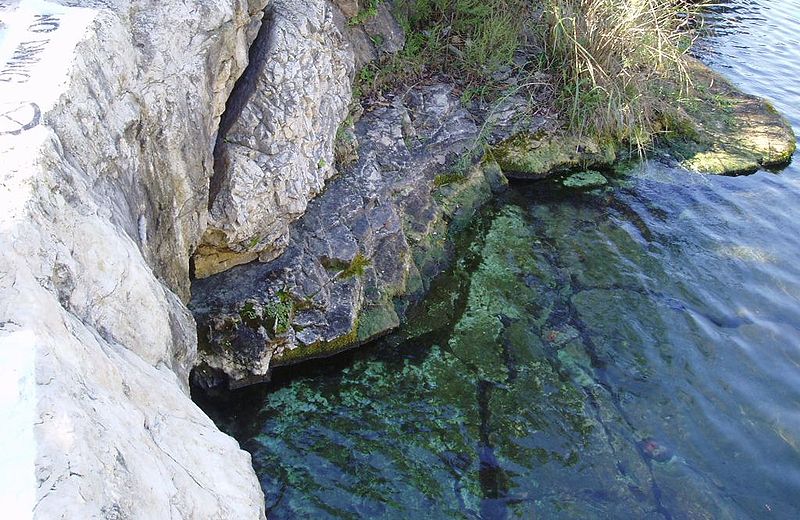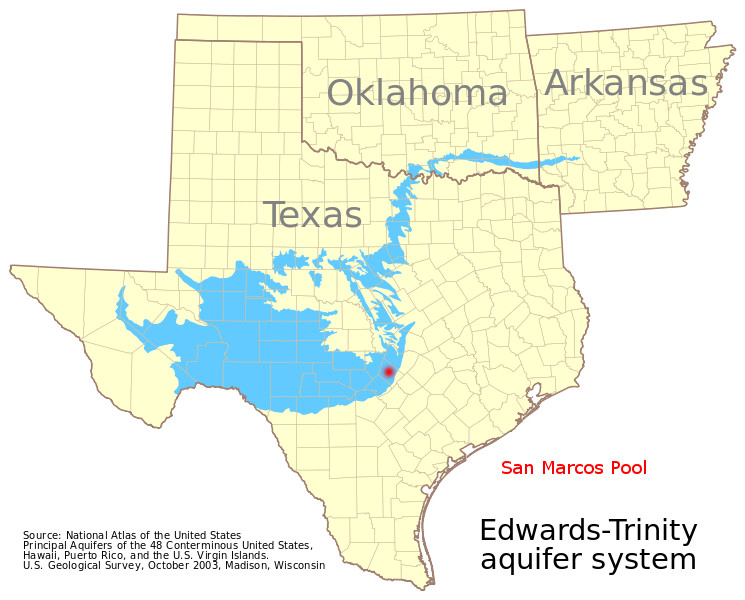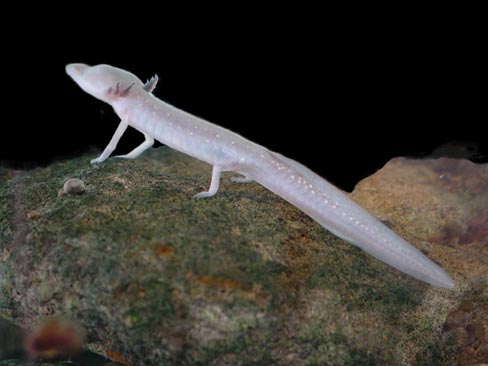Habitat
The Texas Blind Salamander makes its home in the Edwards Aquifer
of central Texas, specifically in the San Marcos pool in Hays
County, Texas. The Edwards Aquifer resides in a karst landscape
which is a particular type of environment in which the soluble
bedrock has been dissolved in places giving rise to caves which
help to drain water from the overlying soils. The soluble
bedrock is usually a carbonate rock such as limestone or
dolomite (Springer 2007). 
This
underground environment makes it very difficult to observe these creatures
in their natural habitats so much of what is known about these creatures is
known from specimens grown and observed in a laboratory setting. The water
temperatures found within Edwards Aquifer are fairly constant throughout the
year, remaining around 21-23 degrees Celsius (Uhlenhuth 1921)(Epp et al.
2010). One of the reasons the Texas Blind Salamander is found only in this
region of the world is its need for clean water of a relatively constant
temperature (Edwards Aquifer Species 2003). Other species
living with the Texas Blind salamander include various species of snails,
amphipods, and shrimp on which the salamanders, as the top predators of the
ecosystem, prey (Texas Blind Salamander – National Wildlife
Federation 2014)(Springer 2007). 
Because the Salamanders and many of the other species living within the same
environment are fully aquatic creatures, one of the biggest threats they
face is from humans over pumping the aquifer to extract fresh water. This
could lower the water levels within the aquifer, reducing the size of the
salamander’s environment, and also could cause salt water to enter areas
that are currently occupied by fresh water, which would also be detrimental
to the salamanders. Because they are located underground where water
accumulates from surface runoff that eventually penetrates the ground, they
face another threat, and that threat is that of their environment being
contaminated by chemical spills. Because of these dangers the species, as
well as many of their cohabiting species, is federally classified as
endangered, just as the
Hell Creek Cave Crayfish is. (Edwards Aquifer Species 2003).
